Angel Fish
Angel fish refers to a group of freshwater fish belonging to the family Cichlidae and the genus Pterophyllum. They are characterized by their distinct triangular shape, elongated fins, and vibrant coloration.
The most common species of angel fish is Pterophyllum scalare, also known as the common angel fish. Other species include Pterophyllum altum, known as the altum angel fish, and Pterophyllum leopoldi, known as the dwarf angel fish. Each species has unique characteristics, colors, and requirements.
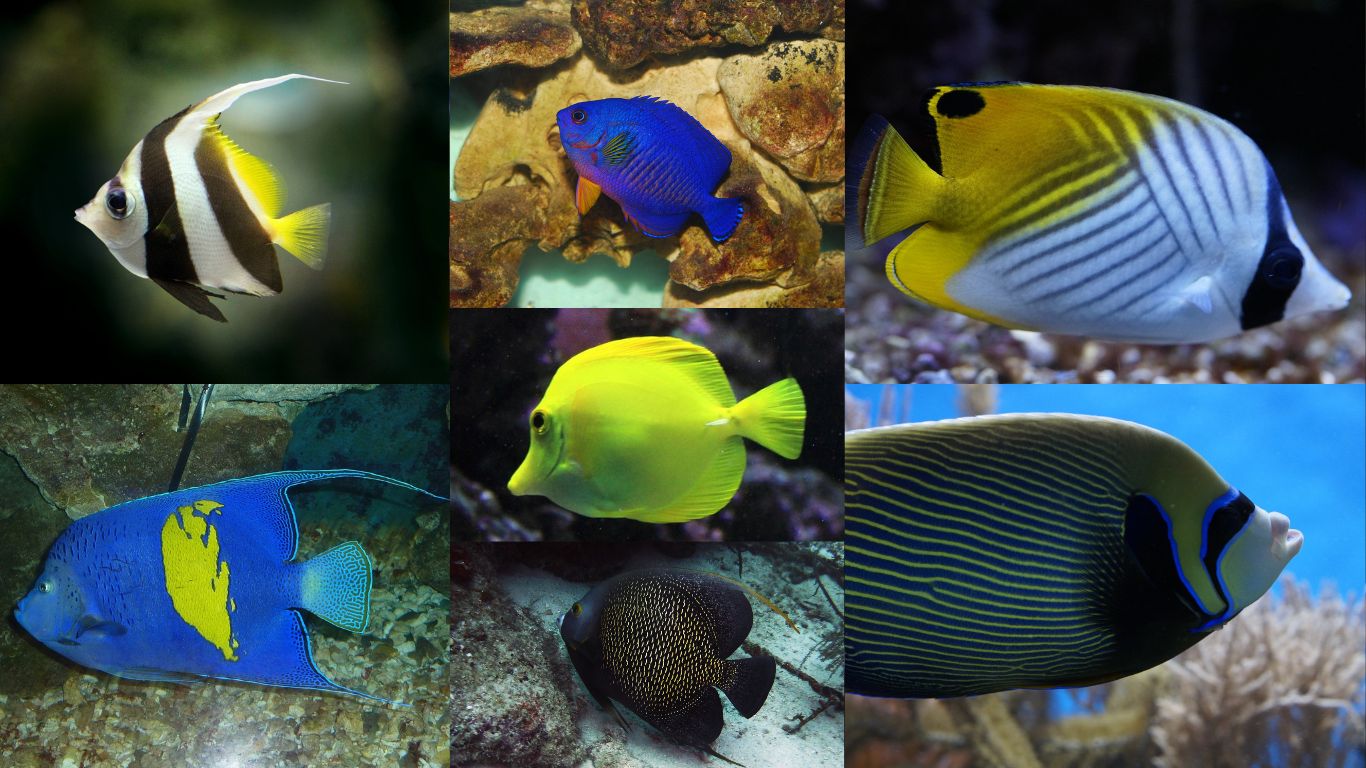
Angel fish are highly popular among aquarium enthusiasts due to their graceful appearance and striking colors. They are considered a centerpiece species, often serving as the focal point in aquascapes. Their peaceful temperament makes them compatible with many other fish species, adding to their popularity in community tanks. Angel fish are also valued for their breeding potential and the variety of color morphs that have been selectively bred over time. The ease of care and availability of angel fish in the aquarium trade contribute to their widespread popularity.
Physical Characteristics
Here below are some physical characteristics of Angel fishes.
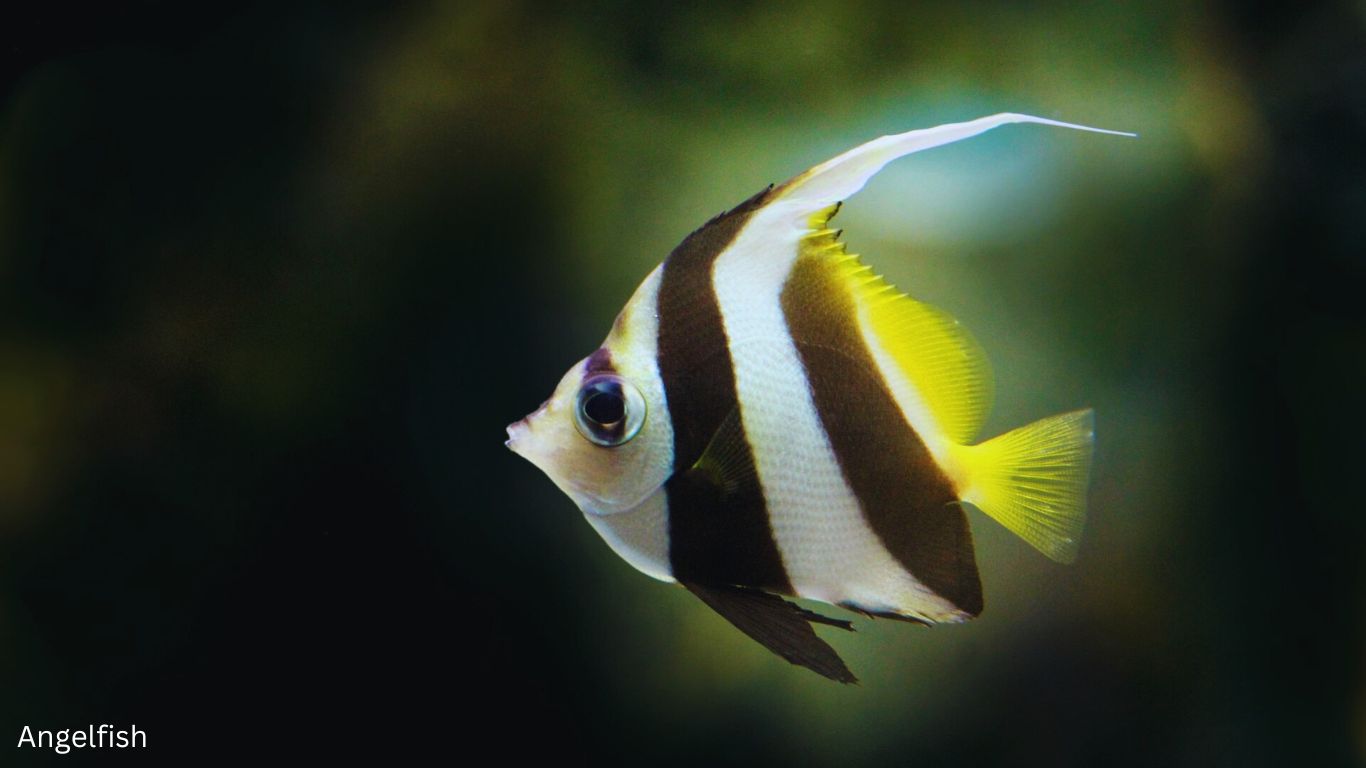
A. General body shape and size
Angel fish have a distinctive triangular body shape, with a laterally compressed body and a pointed head.
They typically grow to a size of 4 to 6 inches (10 to 15 centimeters) in height, excluding the fins.
B. Fin structure and variations
Angel fish have long, flowing fins that add to their elegance.
They possess a dorsal fin, which is tall and extends along the back.
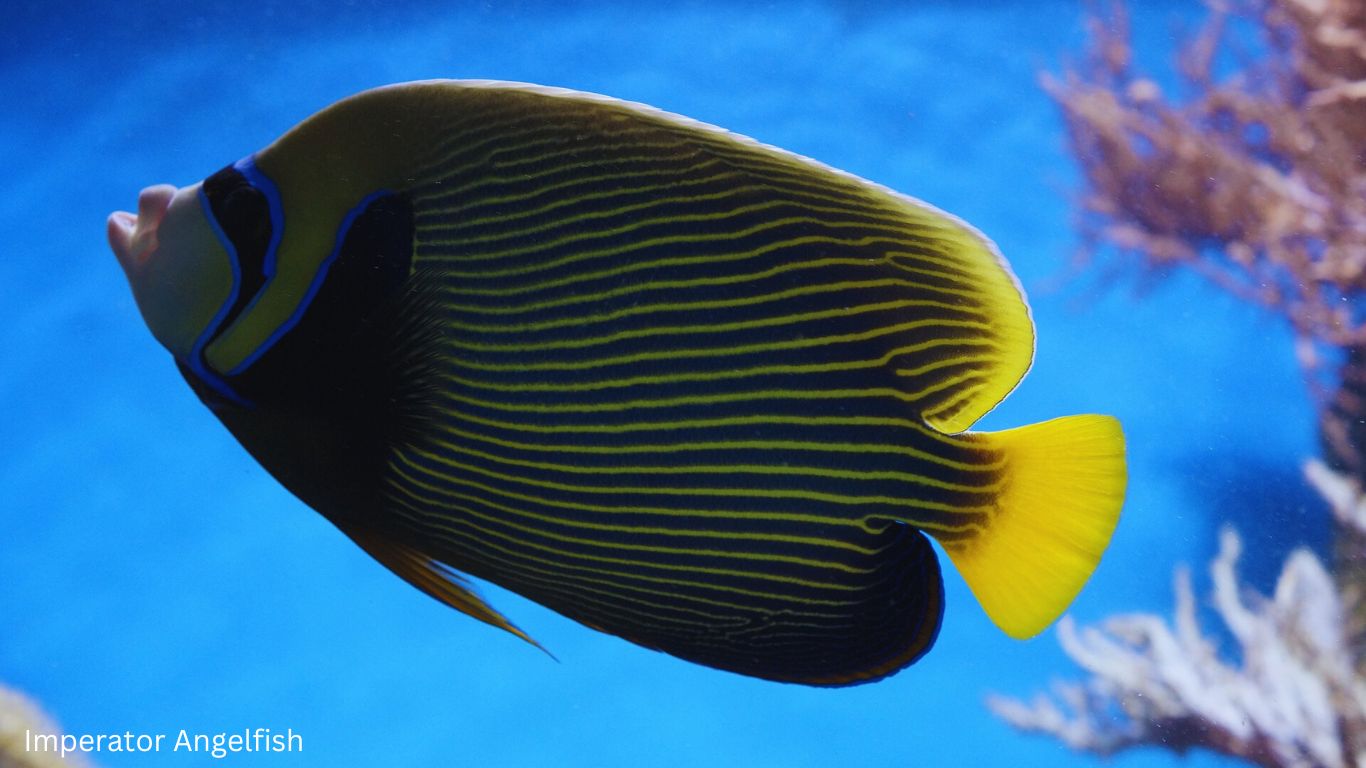
The anal fin, located on the underside near the tail, is also elongated.
The pelvic and pectoral fins are well-developed, aiding in their graceful movement through the water.
The exact shape and size of the fins can vary slightly between species and individuals.
C. Coloration and patterns
Angel fish are known for their vibrant coloration and intricate patterns.
Common angel fish typically have a silver or gray body with vertical black stripes extending from the top to the bottom.
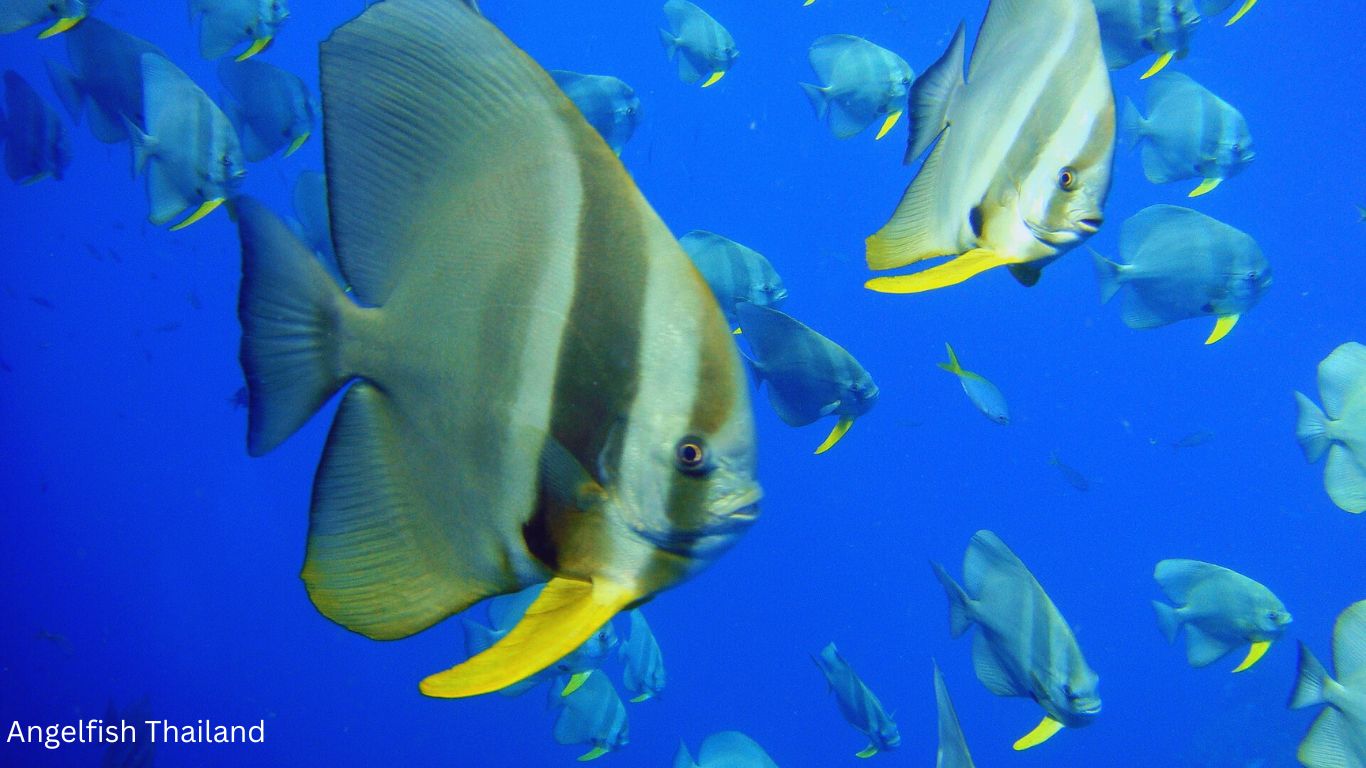
There are also numerous color variants available through selective breeding, including black, white, gold, and marbled patterns.
Altum angel fish have a more subdued coloration, with shades of silver and black on their body.
Dwarf angel fish display various color patterns, including stripes, spots, and marbling, depending on their geographic origin.
D. Sexual dimorphism
Male and female angel fish exhibit subtle differences in appearance, known as sexual dimorphism.
In general, mature males have a more pointed dorsal fin, while females have a slightly rounder fin.
Additionally, males may develop a small hump on their forehead as they reach sexual maturity.
Determining the sex of angel fish can be challenging until they mature, as the differences become more apparent with age.
Natural Habitat
A. Native regions and distribution
Angel fish are native to the tropical regions of South America, primarily the Amazon River basin and its tributaries.
They are found in countries such as Brazil, Peru, Colombia, and Venezuela.
Due to their popularity in the aquarium trade, angel fish have been introduced to various other regions around the world.
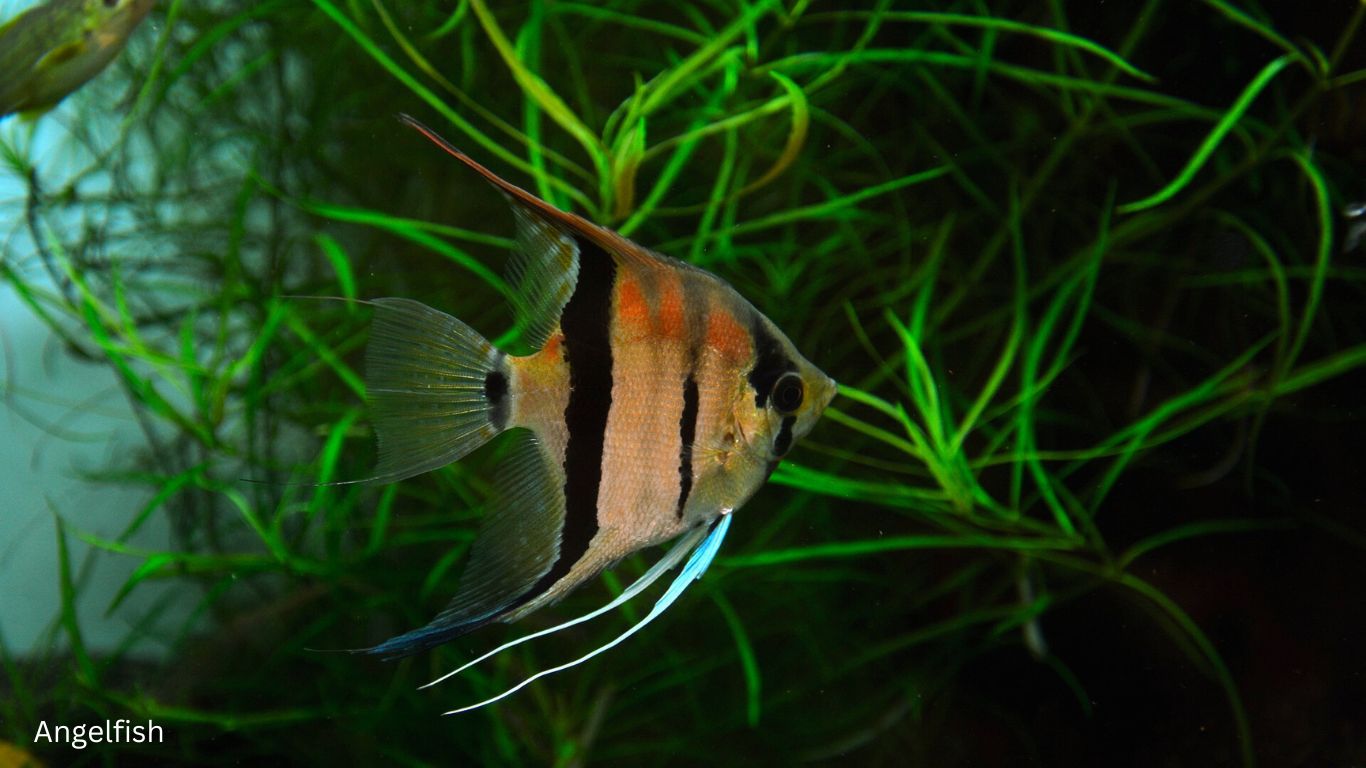
B. Preferred aquatic environments
Angelfish inhabit slow-moving or stagnant freshwater environments, such as rivers, streams, and flooded areas.
They are commonly found in areas with dense vegetation, submerged tree roots, and overhanging vegetation.
Angelfish prefer calm waters with minimal water flow and appreciate areas with shaded spots and hiding places.
C. Water parameters and temperature requirements
Angelfish thrive in tropical freshwater conditions.
The ideal temperature range for angelfish is between 75°F and 82°F (24°C and 28°C).
They prefer slightly acidic to neutral water with a pH range of 6.5 to 7.5.
Good water quality is essential, including regular filtration and maintenance to ensure proper oxygenation and removal of waste.
It is important to provide a well-established aquarium with stable water parameters to replicate their natural habitat.
Angelfish Species
A. Pterophyllum scalare (common angelfish)
The common angelfish has a laterally compressed body with a triangular shape. It typically reaches a size of about 6 inches (15 centimeters) in height. The dorsal and anal fins are long and flowing, giving it a majestic appearance.
Common angelfish have been selectively bred to produce a variety of color variants.
Some popular variants include:
Silver: The classic silver body with vertical black stripes.
Black: Completely black body with no stripes.
Gold: Golden body with black markings.
Marble: Varied patterns of black, white, and gray marbling.
Veil: Long, flowing fins with various color combinations.
Common angelfish are native to the Amazon River basin in South America.
They inhabit slow-moving waters, flooded areas, and areas with dense vegetation.
Angelfish are generally peaceful but can be territorial during breeding or if their territory is invaded.
They are omnivorous, feeding on a diet of small invertebrates, insects, and plant matter.
B. Pterophyllum altum (altum angelfish)
Altum angelfish have a taller body shape compared to the common angelfish.
They can reach heights of up to 12 inches (30 centimeters).
The dorsal and anal fins are longer and more elongated compared to the common angelfish.
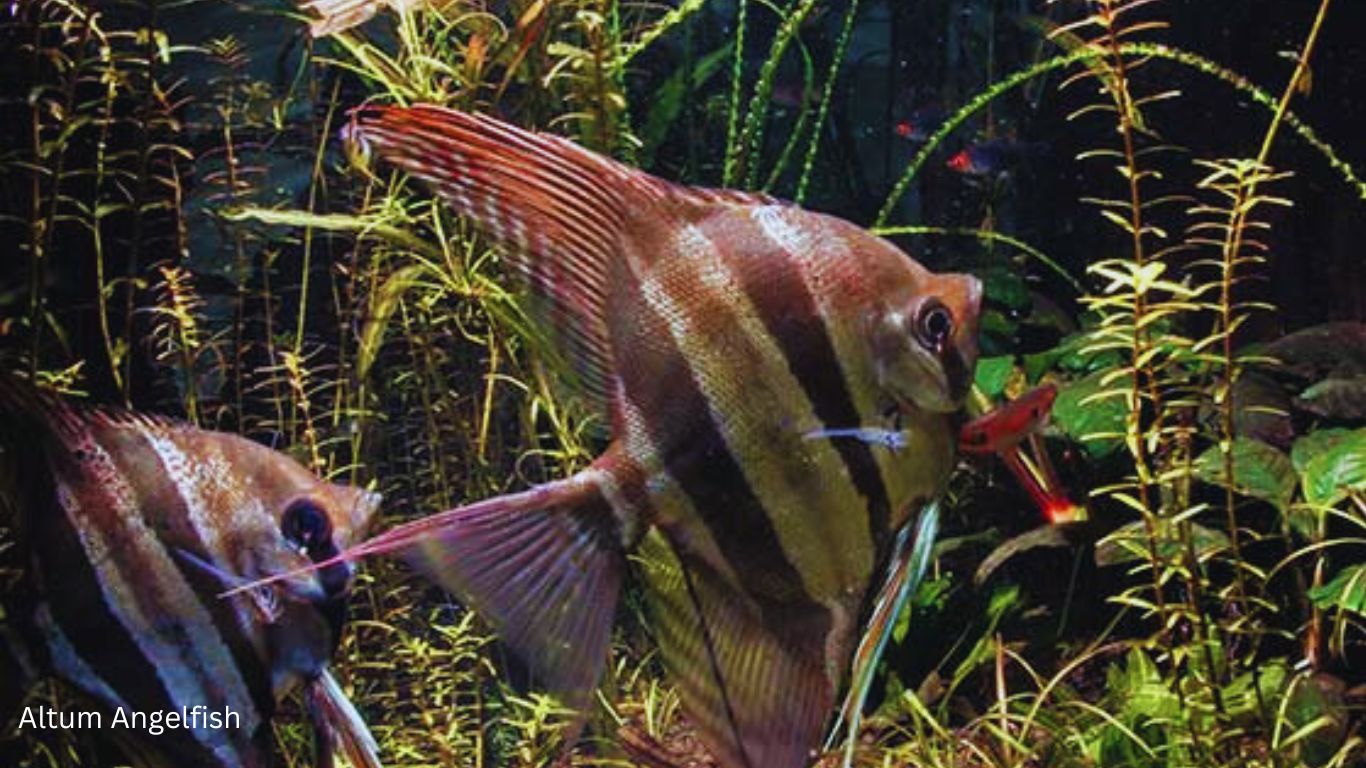
Altum angelfish are native to the upper Orinoco and Rio Negro river basins in South America.
They inhabit areas with deep, slow-moving waters, often found in areas with dense forest cover.
Altum angelfish are more sensitive to water conditions and require meticulous care to thrive in aquarium settings.
Altum angelfish have a taller body shape and longer fins compared to the common angelfish.
They have a more subdued coloration, with shades of silver and black on their body.
Altum angelfish are generally considered more challenging to keep and require larger tank volumes and more specific water parameters.
C. Pterophyllum leopoldi (dwarf angelfish)
Dwarf angelfish are the smallest of the angelfish species, growing up to 3 to 4 inches (7 to 10 centimeters) in height.
They have a rounder body shape compared to the other angelfish species.
The dorsal and anal fins are shorter and less elongated.
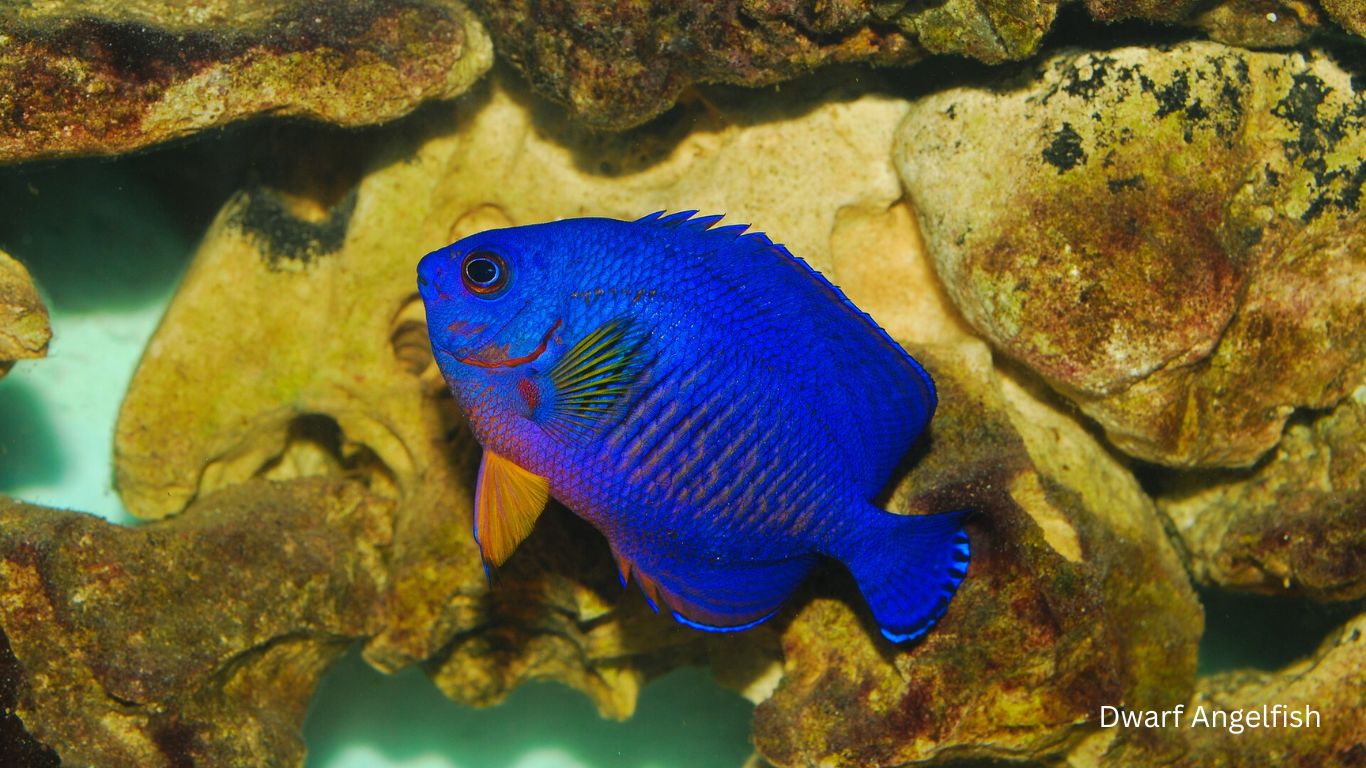
Dwarf angelfish are native to the Amazon River basin, specifically the Rio Negro and its tributaries.
They inhabit similar environments as the common angelfish, such as slow-moving waters with vegetation and submerged tree roots.
Dwarf angelfish are known for their playful and active nature, often darting around the aquarium.
Due to their smaller size, dwarf angelfish are more suitable for smaller aquariums.
They are generally peaceful and can be kept with other small, peaceful fish species.
Care should be taken when choosing tank mates to ensure they are not aggressive or prone to fin-nipping.
Care and Maintenance
A. Aquarium setup and tank requirements
Angelfish require a well-equipped aquarium that meets their specific needs. Provide a spacious tank with a minimum capacity of 20 gallons for a single angelfish, and larger tanks for multiple angelfish or tank mates. The tank should have plenty of hiding spots, such as driftwood, rocks, and plants, to mimic their natural habitat and provide territorial boundaries. Use a fine-grained substrate, as angelfish like to sift through the substrate. It is essential to ensure the tank has a secure lid to prevent jumping, as angelfish can be prone to jumping out of the aquarium.
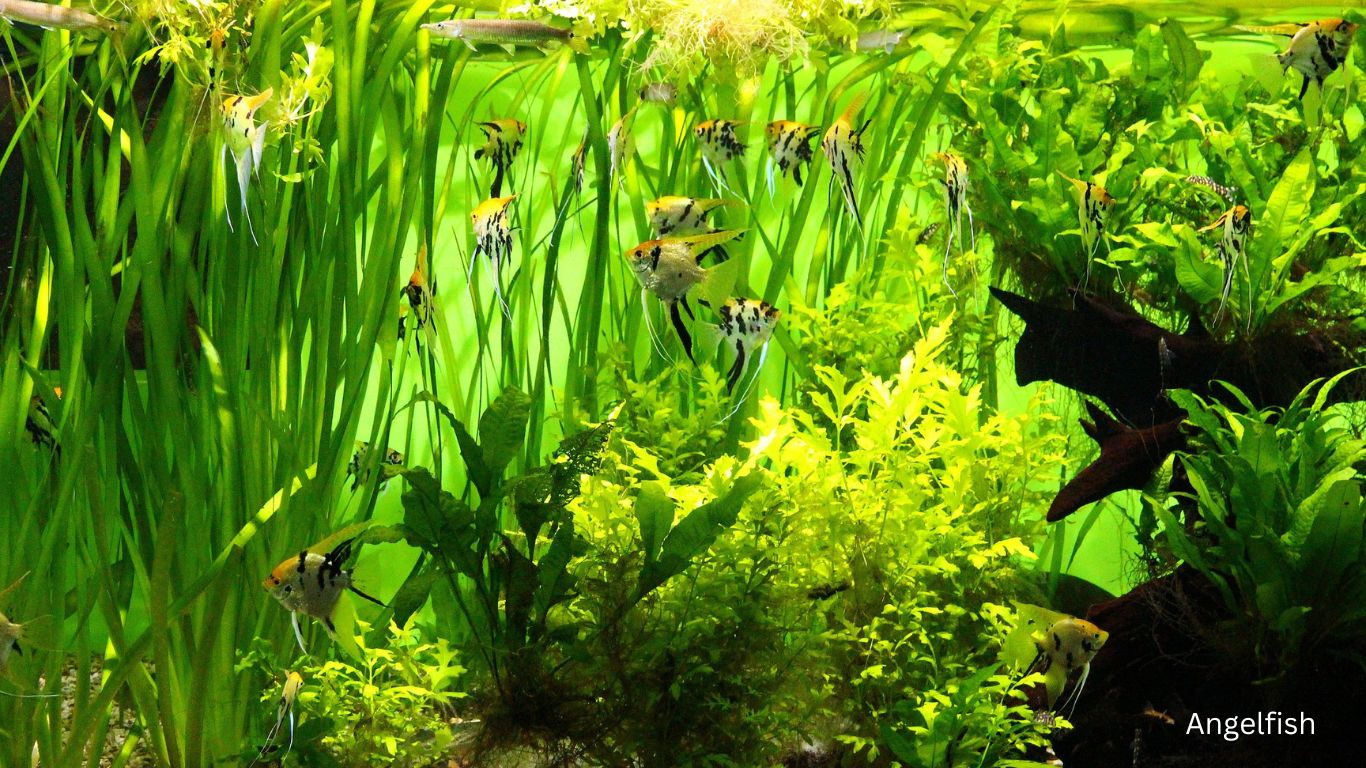
B. Water quality management
Maintaining good water quality is crucial for the health of angelfish. Perform regular water changes of around 20-25% every 1-2 weeks to remove accumulated waste and replenish fresh water. Use a reliable filtration system to remove waste and maintain proper water circulation. Test water parameters regularly, including pH, ammonia, nitrite, and nitrate levels, to ensure they remain within the appropriate range for angelfish. Angelfish are sensitive to fluctuations in water conditions, so it is important to keep water quality stable and consistent.
C. Feeding habits and dietary needs
Angelfish are omnivorous and require a varied diet to thrive. Offer them a balanced diet that includes high-quality flake or pellet food specifically formulated for angelfish. Supplement their diet with frozen or live foods such as brine shrimp, bloodworms, and daphnia. Fresh vegetables, such as blanched spinach or peas, can also be included as part of their diet. Feed them small portions multiple times a day to prevent overfeeding and maintain optimal health.
D. Compatibility with other fish species
Angelfish generally have a peaceful temperament but can become territorial during breeding or if their territory is invaded. When selecting tank mates, choose peaceful species that are not prone to fin-nipping. Avoid aggressive or overly boisterous fish that may stress or harm the angelfish. Good tank mates for angelfish include tetras, rasboras, peaceful catfish, and other non-aggressive cichlids. Monitor the interactions between fish in the tank and be prepared to separate any incompatible or aggressive individuals.
E. Common diseases and health issues
Angelfish are susceptible to various common fish diseases, including ich, fin rot, and bacterial infections. Maintain a clean and well-maintained aquarium to minimize the risk of diseases. Quarantine new fish before introducing them to the main tank to prevent the spread of potential diseases. Observe your angelfish regularly for any signs of illness, such as loss of appetite, abnormal swimming behavior, or visible signs of infections. If any health issues arise, promptly seek appropriate treatment and consult with a veterinarian or knowledgeable aquarium professional for guidance.
Breeding and Reproduction
Angelfish typically reach sexual maturity at around 6 to 12 months of age. To breed angelfish, it is important to have a pair of sexually mature individuals. Males may develop a small hump on their forehead and have a more pointed dorsal fin, while females have a rounder fin shape. It is best to introduce a group of young angelfish and allow them to pair off naturally.
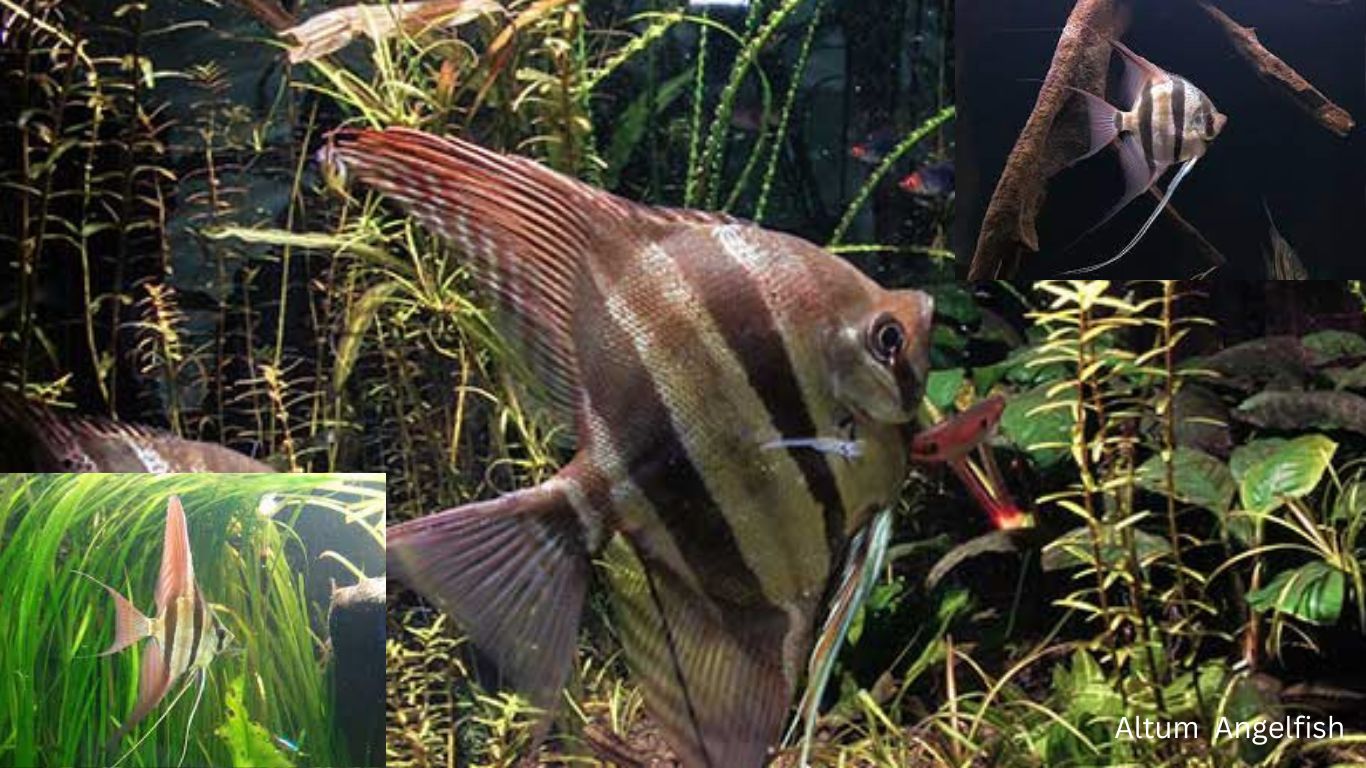
A. Breeding conditions and setup
To encourage angelfish breeding, provide suitable breeding conditions in the aquarium. Increase the water temperature slightly to around 78°F to 82°F (25°C to 28°C). The water should be soft and slightly acidic, with a pH range of 6.0 to 6.5. Include flat, vertical surfaces such as broad-leaved plants, spawning cones, or slate tiles as potential spawning sites. Ensure the breeding tank has good filtration, and the water quality is well-maintained.
B. Spawning behavior and egg care
Angelfish are substrate spawners and exhibit complex courtship rituals before spawning. The male and female will choose a spawning site and clean it by vigorously fanning and defending the area. During spawning, the male and female will swim closely together, with the female depositing eggs on the chosen surface while the male fertilizes them. The process may repeat multiple times, resulting in several batches of eggs. After spawning, the parents will guard and fan the eggs to provide oxygen and prevent fungal growth.
C. Raising angelfish fry
Once the eggs are laid, it is important to provide suitable conditions for the hatching and rearing of the fry. The eggs typically hatch within 48 to 60 hours. At this point, the fry will remain attached to the spawning surface until they absorb their yolk sacs. Afterward, they will become free-swimming and can be fed newly hatched brine shrimp or commercially available liquid fry food. Maintain good water quality and perform regular water changes to ensure optimal conditions for the growing fry. As the fry grow, they may be separated into a separate rearing tank to prevent predation from adult angelfish or other tank mates.
Breeding angelfish can be a rewarding and fascinating experience, but it requires careful monitoring and management of the breeding environment to maximize success. Patience and dedication are key in ensuring the healthy development and growth of angelfish fry.
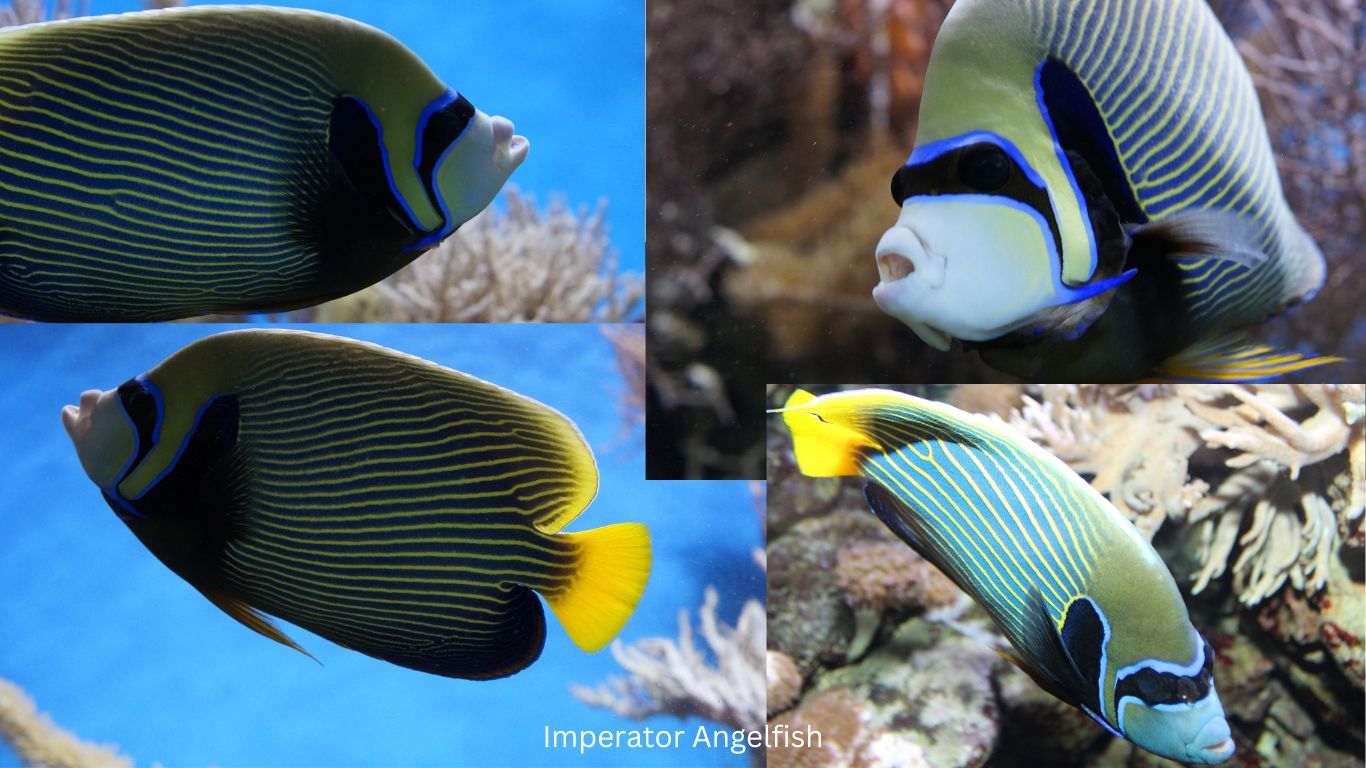
Tips for Keeping Angelfish
A. Tank mates selection
When selecting tank mates for angelfish, choose peaceful species that are compatible with their temperament and size. Avoid fin-nipping or aggressive fish that may stress or harm the angelfish. Good tank mates include tetras, rasboras, peaceful catfish, and other non-aggressive cichlids. Research the compatibility and behavior of potential tank mates to ensure a harmonious community. It is also important to consider the size and swimming patterns of the tank mates to avoid overcrowding in the aquarium.
B. Feeding routines and variety
Provide a varied diet to meet the nutritional needs of angelfish. Offer a high-quality flake or pellet food specifically formulated for angelfish as the staple diet. Supplement their diet with frozen or live foods such as brine shrimp, bloodworms, and daphnia to provide essential proteins and nutrients. Additionally, include fresh vegetables like blanched spinach or peas to provide fiber. Feed them small portions multiple times a day to prevent overfeeding and ensure they receive a balanced diet.
C. Environmental enrichment and hiding places
Angelfish appreciate a well-decorated aquarium with plenty of hiding spots and environmental enrichment. Use driftwood, rocks, and plants to create a natural-looking habitat and provide hiding places for the angelfish. This helps reduce stress and allows them to establish territories. Live plants not only provide hiding spots but also contribute to the overall water quality by absorbing nitrates. Providing a mix of open swimming spaces and shaded areas will allow angelfish to exhibit their natural behaviors.
D. Regular maintenance and monitoring
Regular maintenance is crucial for the health and well-being of angelfish. Perform regular water changes to maintain optimal water quality and remove accumulated waste. Monitor water parameters such as temperature, pH, ammonia, nitrite, and nitrate levels to ensure they remain within the appropriate range. Check the equipment, such as filters and heaters, regularly to ensure they are functioning properly. Observe the angelfish daily for any signs of illness, stress, or abnormal behavior, and address any issues promptly to prevent further complications.
By following these tips, you can create a suitable and thriving environment for your angelfish, promoting their overall health and happiness. Remember to stay attentive to their needs and make adjustments as necessary to provide the best care possible.
Conclusion
Throughout this outline, we have explored various aspects of angelfish, including their physical characteristics, natural habitat, different species, care and maintenance requirements, breeding and reproduction, and tips for keeping them. We learned about their graceful body shape, stunning colors, and the importance of providing a suitable environment for their well-being. We also discussed their breeding behavior and the care needed for their fry. Additionally, we highlighted the significance of selecting appropriate tank mates, offering a varied diet, providing environmental enrichment, and conducting regular maintenance and monitoring.
Angelfish are admired for their elegant appearance, vibrant colors, and unique fin structures. Their popularity as aquarium fish is undeniable, captivating enthusiasts worldwide. Their presence can add a touch of elegance and tranquility to any aquarium, making them a beloved choice for hobbyists and aquarists alike.
As with any pet or living creature, responsible ownership is essential. It is crucial to provide the appropriate care, attention, and environment for angelfish to thrive. Additionally, supporting conservation efforts to protect their natural habitats and preserve their populations is important. By promoting responsible ownership and conservation, we can contribute to the long-term well-being and sustainability of angelfish and their ecosystems.
In conclusion, angelfish are remarkable creatures that bring beauty and serenity to aquariums. By understanding their needs, respecting their natural behavior, and promoting conservation efforts, we can enjoy their presence while ensuring their continued existence for generations to come.
Reference Sites

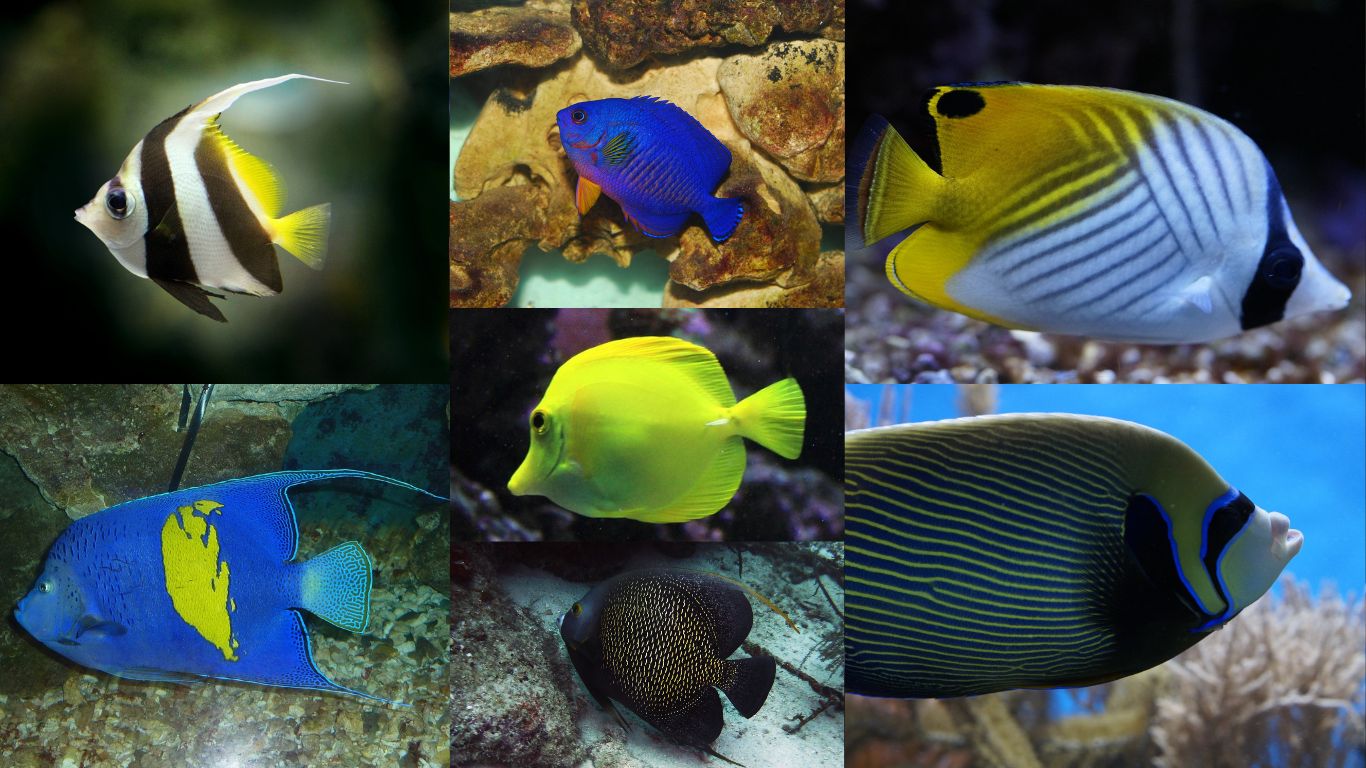
1 thought on “Discover the Angel Fish: Characteristics, Habitat, and More”